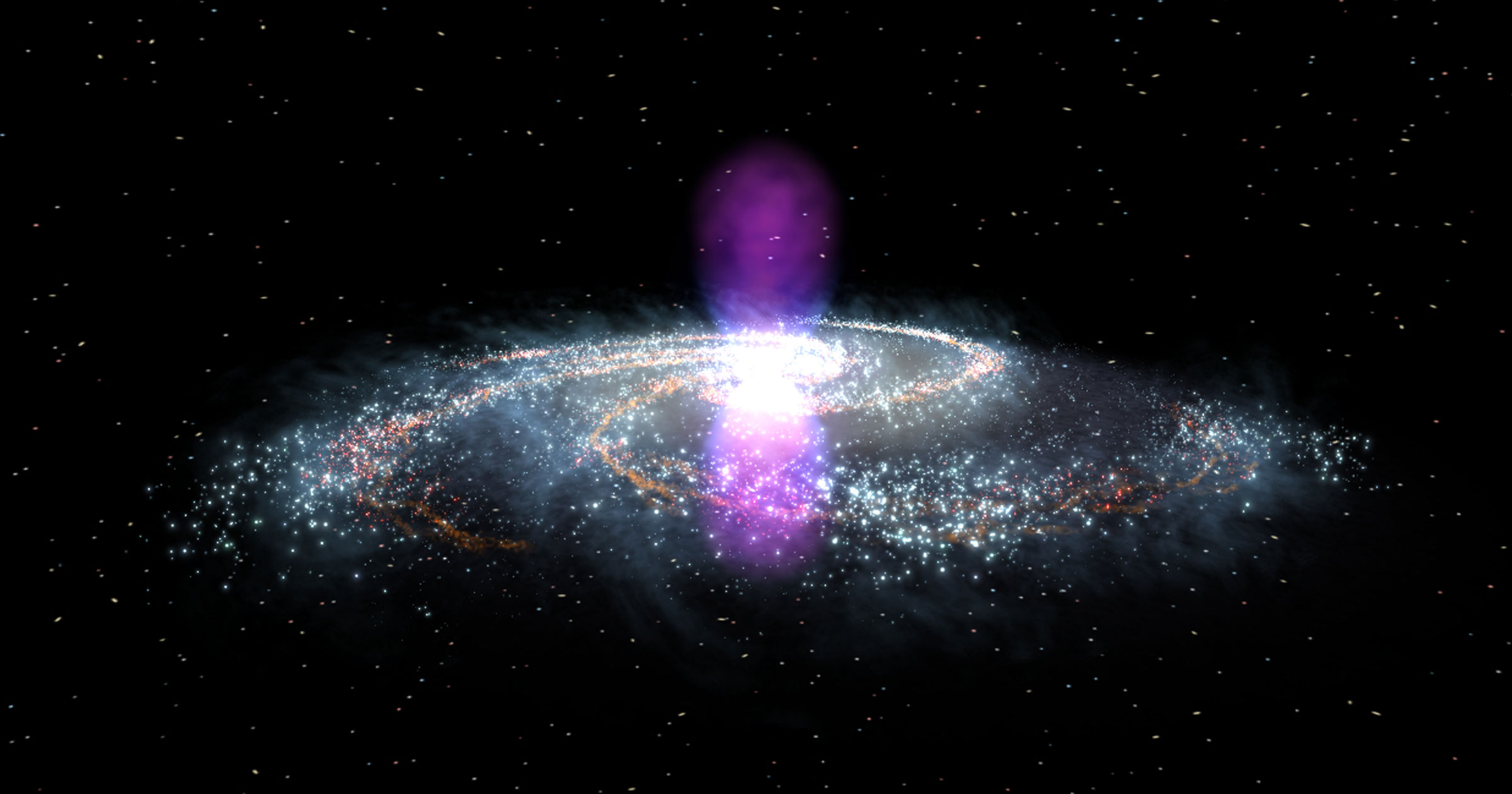Science
Astronomers Investigate Mysterious Gamma Ray Glow from Milky Way

Astronomers are examining a puzzling glow of gamma rays that has been emerging from the heart of the Milky Way for decades. This glow raises questions about its origin, leading to two primary theories: it may stem from collisions of dark matter particles, or it could be the result of pulsars, which are rapidly spinning neutron stars resulting from supernova explosions. A new study published in the journal Physical Review Letters suggests that both explanations are equally plausible, adding urgency to the investigation.
The potential implications are significant. If the gamma rays are indeed linked to dark matter, it may provide the first concrete evidence of this elusive substance, which is believed to constitute more than 26 percent of the universe. Joseph Silk, an astronomy professor at Johns Hopkins University, emphasized the importance of dark matter, stating, “It dominates the universe and holds galaxies together. We’re desperately thinking all the time of ideas as to how we could detect it.” He added that the gamma rays could serve as a crucial clue to understanding dark matter.
The research team, led by Silk and his international colleagues, developed a dark matter map to hypothesize its distribution within the Milky Way. They theorize that billions of years ago, smaller clumps of dark matter merged at the galaxy’s center, increasing the likelihood of collisions. By simulating these collisions, the researchers found that their dark matter map aligned with gamma ray data from the NASA Fermi Gamma-ray Space Telescope.
Despite this intriguing overlap, scientists remain cautious about concluding that the glow is the result of dark matter. The possibility that pulsars are responsible for the gamma rays still exists. To clarify the situation, an upcoming facility, the Cherenkov Telescope Array Observatory, aims to provide higher-resolution images that could help identify the source of the glow. This multinational project will feature 60 telescopes located in two sites: one on the Spanish island of La Palma and the other in the Atacama Desert in Chile.
Silk expressed optimism regarding the new telescope’s capabilities, stating, “A clean signal would be a smoking gun, in my opinion.” In the meantime, the research team is also exploring nearby dwarf galaxies to assess dark matter’s distribution and see if it correlates with existing gamma ray maps. “It’s possible we will see the new data and confirm one theory over the other,” Silk concluded. “Or maybe we’ll find nothing, in which case it’ll be an even greater mystery to resolve.”
The pursuit of answers regarding dark matter remains one of the most intriguing challenges in modern astrophysics. As researchers continue to investigate the enigmatic glow at the center of our galaxy, the potential for groundbreaking discoveries looms large.
-

 Science4 weeks ago
Science4 weeks agoALMA Discovers Companion Orbiting Giant Red Star π 1 Gruis
-

 Top Stories2 months ago
Top Stories2 months agoNew ‘Star Trek: Voyager’ Game Demo Released, Players Test Limits
-

 Politics2 months ago
Politics2 months agoSEVENTEEN’s Mingyu Faces Backlash Over Alcohol Incident at Concert
-

 World2 months ago
World2 months agoGlobal Air Forces Ranked by Annual Defense Budgets in 2025
-

 World2 months ago
World2 months agoElectrification Challenges Demand Advanced Multiphysics Modeling
-

 World2 months ago
World2 months agoMass Production of F-35 Fighter Jet Drives Down Costs
-

 Business2 months ago
Business2 months agoGold Investment Surge: Top Mutual Funds and ETF Alternatives
-

 Science2 months ago
Science2 months agoTime Crystals Revolutionize Quantum Computing Potential
-

 Top Stories2 months ago
Top Stories2 months agoDirecTV to Launch AI-Driven Ads with User Likenesses in 2026
-

 Entertainment2 months ago
Entertainment2 months agoFreeport Art Gallery Transforms Waste into Creative Masterpieces
-

 Health2 months ago
Health2 months agoGavin Newsom Critiques Trump’s Health and National Guard Plans
-

 Business2 months ago
Business2 months agoUS Government Denies Coal Lease Bid, Impacting Industry Revival Efforts









